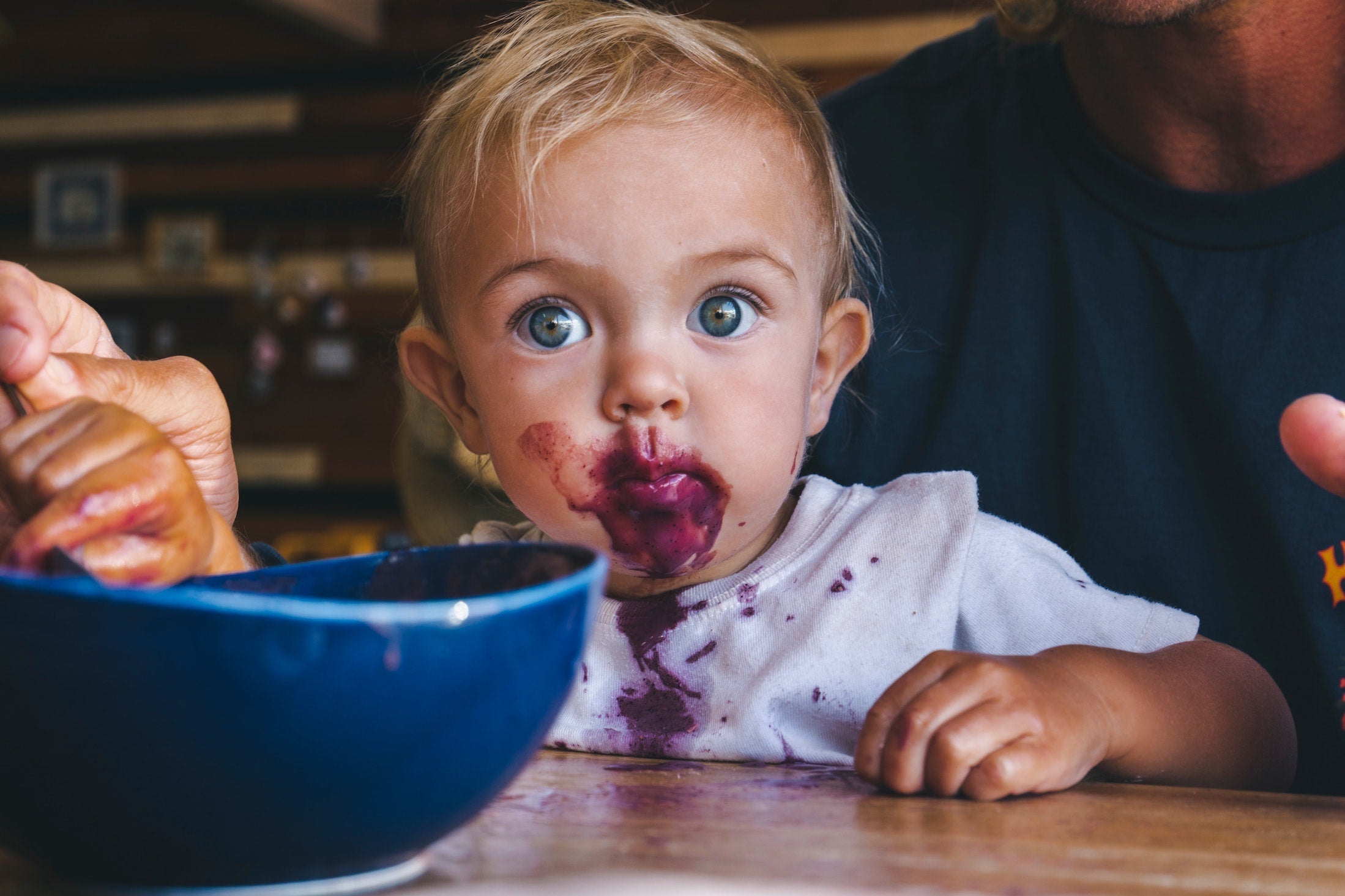Nosebleeds in toddlers can be very messy, and sometimes scary, however they usually look worse than they are. Although common, nosebleeds in kids are relatively harmless and can be caused by an array of things, such as little fingers picking noses, blowing too hard or from knocks and bumps during playtime.
Reasons for toddler nosebleeds

Other reasons toddlers may get nosebleeds are:
- Nose or throat infections
- Allergies and hayfever
- Something stuck in their nose (why do they always put things in there?!)
- Sensitive blood vessels that can burst in dry, warm weather
- Medications such as anti-inflammatory’s or nose sprays
- Underlying health condition (uncommon but if your child is getting more than one nosebleed per week then it’s best to check with your doctor).
How to treat a blood nose

There are two types of nosebleeds, and the one that is most common in kids usually start from just one nostril and happen near the front of the nose, on the wall separating the two sides of the nose (the septum).
The other type of nosebleed that starts farther back in the nose is less common and usually seen in older people or those who have high blood pressure or injuries to the nose or face.
For minor nosebleeds in kids, you can follow these simple steps:
- Remain calm, reassure them that everything will be okay and they will feel better soon.
- Encourage your little one to sit up or stand, so that the blood can flow with gravity. Try not to let them lie down because this can cause a blocked nose and get pretty uncomfortable.
- Catch the blood with tissues or a damp cloth.
- Tip their head forward. Don't lean the head back; this can make blood run down their throat.
- Encourage them to blow the nose very gently and then apply firm pressure to the soft part of the nose above the nostrils and encourage them to take some breaths through the mouth.
- Hold this pressure for around ten minutes. You might need some good distraction tools here, so BodyICE Kids packs can be handy, story time (about a brave character, just like them of course!) or some good old-fashioned screen time.
- Apply a BodyICE Kids ice pack to the forehead and the back of their neck.
- Encourage them to spit out any blood which enters the mouth
- Release pressure gradually after ten minutes to assess if the bleeding has stopped. If the nosebleed hasn’t stopped then pinch it for another 10 minutes. If it still hasn't stopped then call a doctor or nurse to assess the situation.

After care for a blood nose
- Remind kids not to not pick, rub, or blow their nose in the following hours — this can make it bleed again.
- Don’t lie down or tilt the head back for a few hours afterward.
- Encourage quiet time, such as reading or watching a movie or drawing where they can be sitting up but relatively still for the next few hours.
- Take them to the doctor if you notice they are having difficulty breathing through an open mouth, vomiting, a fever or chill develops, there is a discharge that looks like pus or if the nosebleed hasn’t stopped after two rounds of pressure for ten minutes.
Our BodyICE Kids ice packs have handy straps to keep them in place for things such as nosebleeds. They are also a comforting distraction when your little one is upset or scared about their nosebleed.
Check them out here.





Leave a comment
All comments are moderated before being published.
This site is protected by hCaptcha and the hCaptcha Privacy Policy and Terms of Service apply.